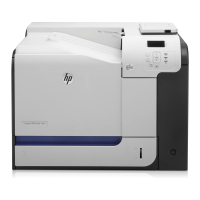FUP Commands
File Utility Program (FUP) Reference Manual—523323-014
2-57
Copy: Display Form Listing Format
BYTE
displays in byte and ASCII format. The two bytes of each word are converted
separately.
If you do not specify BYTE, a word is treated as a single value and
converted accordingly.
If you specify BYTE (but not OCTAL, DECIMAL, or HEX), the display is in
byte-octal format.
ASCII or A
displays in ASCII format. This option is ignored when combined with any
preceding display-option.
NO HEAD
omits the heading preceding each record displayed.
[ NO ] TITLE
directs FUP to write a title line that includes the name of the file, the time of the
COPY process, and the last modification time of the file.
Copy: Display Form Listing Format
Example 2-1 shows the format FUP COPY uses to display files.
The headers and variables in Example 2-1 are:
Example 2-1. COPY Command Listing Format
[ filename RECORD rec-num KEY xx ( %yy )
LEN length-value mm/dd/yy hh:mm ]
offset word 0 word 1 ... word n [ ASCII format ]
. . . . [ . ]
. . . . [ . ]
. . . . [ . ]
filename is the name of the file being displayed.
RECORD rec-num indicates the ordinal number of the record that follows.
KEY xx (%yy) (for disk files) indicates the primary key value (current record
pointer) of the record in decimal (xx) and octal (%yy).
(for unstructured files) xx is a relative byte address.
(for relative files) xx is a record number.
(for entry-sequenced files) xx is a record address.
(for key-sequenced files) xx is not given.
LEN length-value indicates the decimal length of the record in bytes.

